Live and Let’s Fly offers tips on the best ways to fly international first class with an infant. That’s incredibly controversial – many passengers believe children belong in coach, because it’s fine to annoy coach passengers but not people spending more money.
The truth is that children can often be better behaved than adults, that whether children cry or act out is often a function of how the parents prepare and react, and also that some kids are just easier to travel with than others.
The advice, though, is really generalizable beyond flying across oceans and spending a lot of money or miles. My daughter was an amazing traveler when she was an infant and toddler. We took her to Australia, Paris (twice), Bora Bora and many other places in her first year and a half.

Park Hyatt Paris

View From Villa 105 at Conrad Bora Bora

View From Park Hyatt Sydney
And we often got comments from flight attendants and other passengers at the end of a long haul flight that they hadn’t even realized she was there – more of a testament to her, and to my wife, than to me. But there were still things that we did to set ourselves up for success.
We’re doing this again! My wife and I have a young son, and though he’s very different we’re applying the same lessons to travel successfully that worked so well the first time around. So far, so good!
Here are 11 things we do that make travel go so much more smoothly, keep kids happy, and leave other passengers breathing a sigh of relief.
- For newborns, be prepared to feed them right away. Newborns sleep a lot which is great for flying, though I think a sweet spot for trave is really between 3 and 9 months. The needs of a newborn are pretty limited.. sleep, eat, change diaper and they’ll cry if they’re uncomfortable so be prepared to move them around and change their context a bit.
Difficult newborns cry at different levels, but for most it’s for a reason. They get hungry often, so be prepared to feed them. If you’re bottle-feeding, have those pre-made where possible (you can bring water, including distilled water, through security in whatever quantities you need when it’s for your baby).
The faster you can address their need, the faster you’ll cut crying short. Your fellow passengers (and your baby!) will thank you.
- For infants and toddlers, be ready to keep them occupied. Have lots of activities. Just as at home, the attention span of a small child is limited so you’re going to need to be switching up their activities frequently.
- Bring plenty of snacks. A hungry child gets restless and angry. Kids snack more often at home, so don’t rely on the airline’s meal and snack schedule to meet the child’s needs. Also, the airline’s choices are limited. While my wife and I have gone to great lengths to feed our daughter the same foods we eat, that’s usually good food and plane food often isn’t. So you may have to supplement or replace airplane meals, too, with snacks your kids will eat.
- Give yourself – and them – plenty of space if you can. While non-parents often say that kids don’t belong in first class, having more space is going to be less stressful for the child. It’s going to mean less climbing over seats and onto other passengers. That’s actually a kindness to the kids and to everyone else. More room to maneuver means more room in which to keep them occupied and engaged – so redeem upgrades and awards for premium cabins if you can!
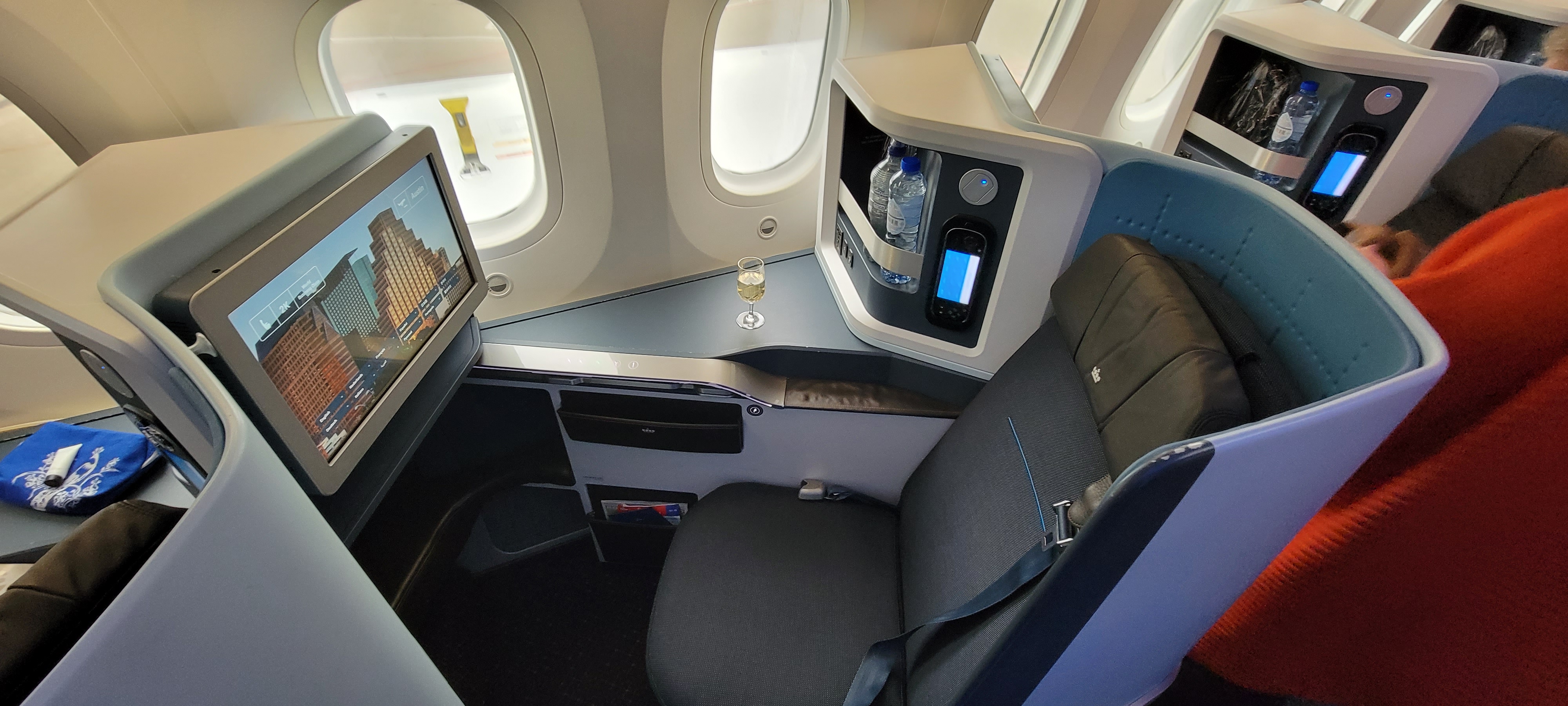
KLM Business ClassI’m a huge defender of lap infants. I believe requiring children under two to have their own seat would make air travel less affordable – and therefore fewer trips by air, and perhaps more trips on the road. That’s less safe.
At the same time, buying that extra seat for the child if you can does make things a lot less stressful and more comfortable. And as soon as they’re able to use it, the CARES harness is fantastic.
- Pick the right seats. That means choosing bulkheads are bassinet seats on long haul aircraft with many airlines if you’re traveling with an infant, but at a minimum making sure you have seats assigned together – with your child, and also with your partner if traveling with them. For many kids, be sure they have a window seat. Seeing out is wonder when you’re in the air, and some kids might melt down if they want to look out the window and can’t (or might try to climb over another passenger to get there).
I loved the Qantas first class ‘newborn cubby’ on their Airbus A380.
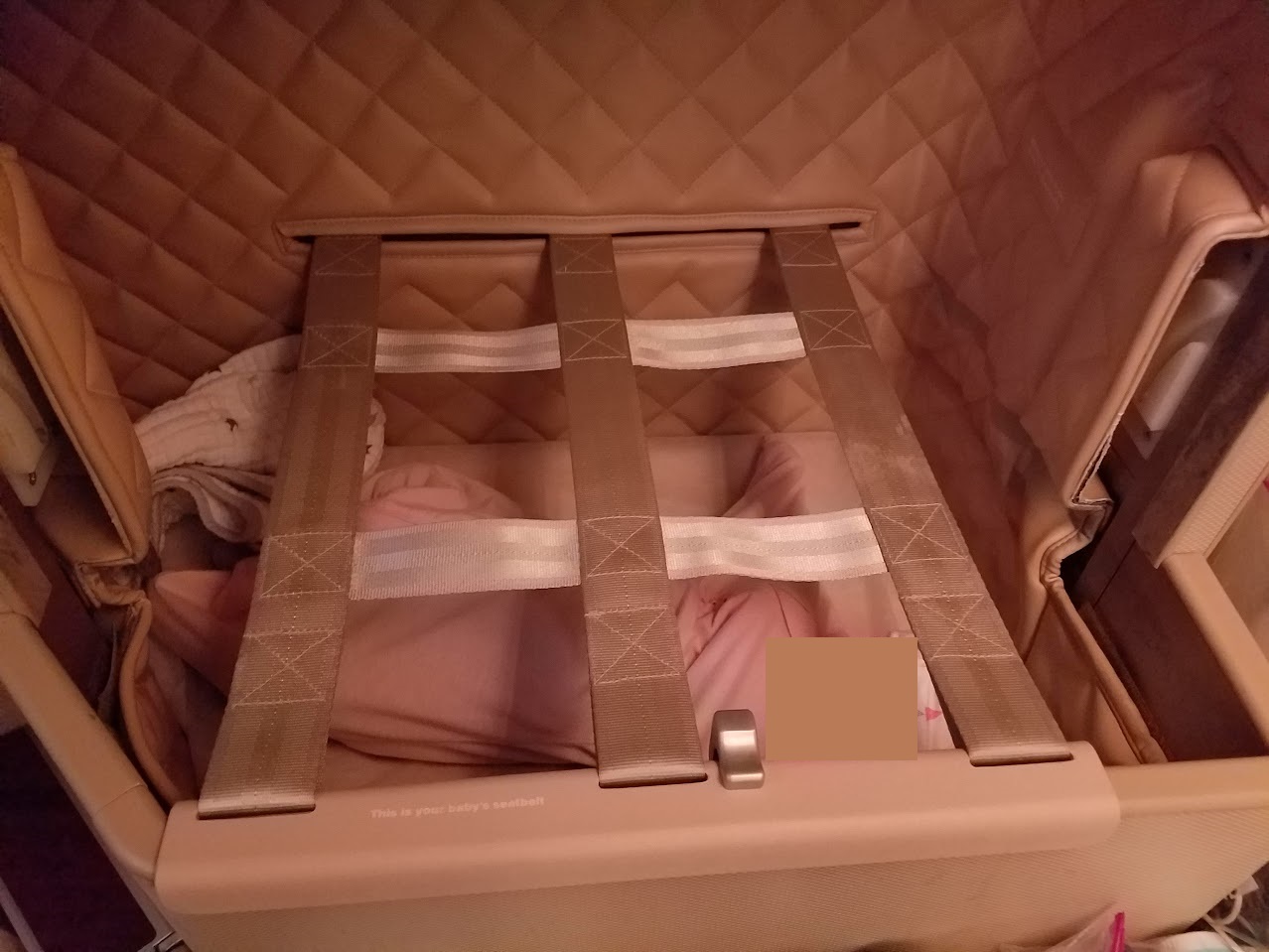
And the British Airways first class child seat.
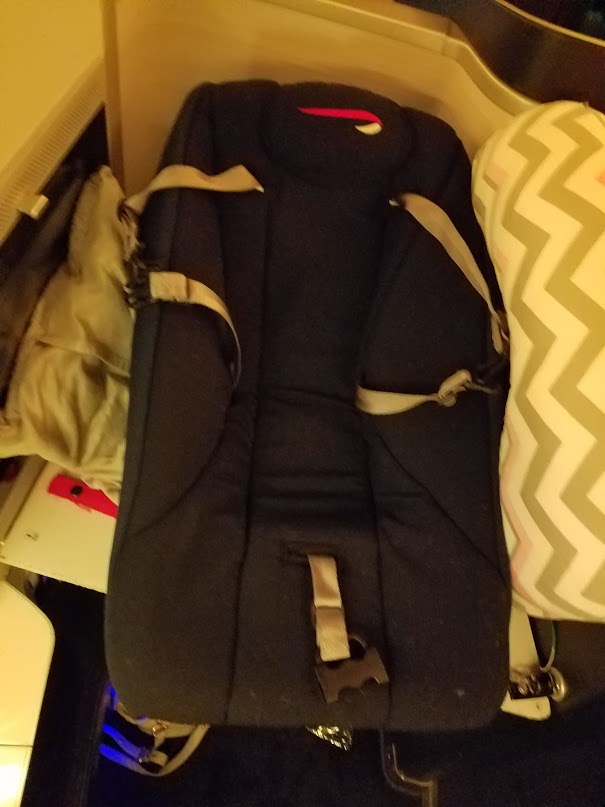
- For long haul, take off close to bedtime. They’ll get tired out in the airport, and the plane is a giant white noise machine. It’s great for sleeping.
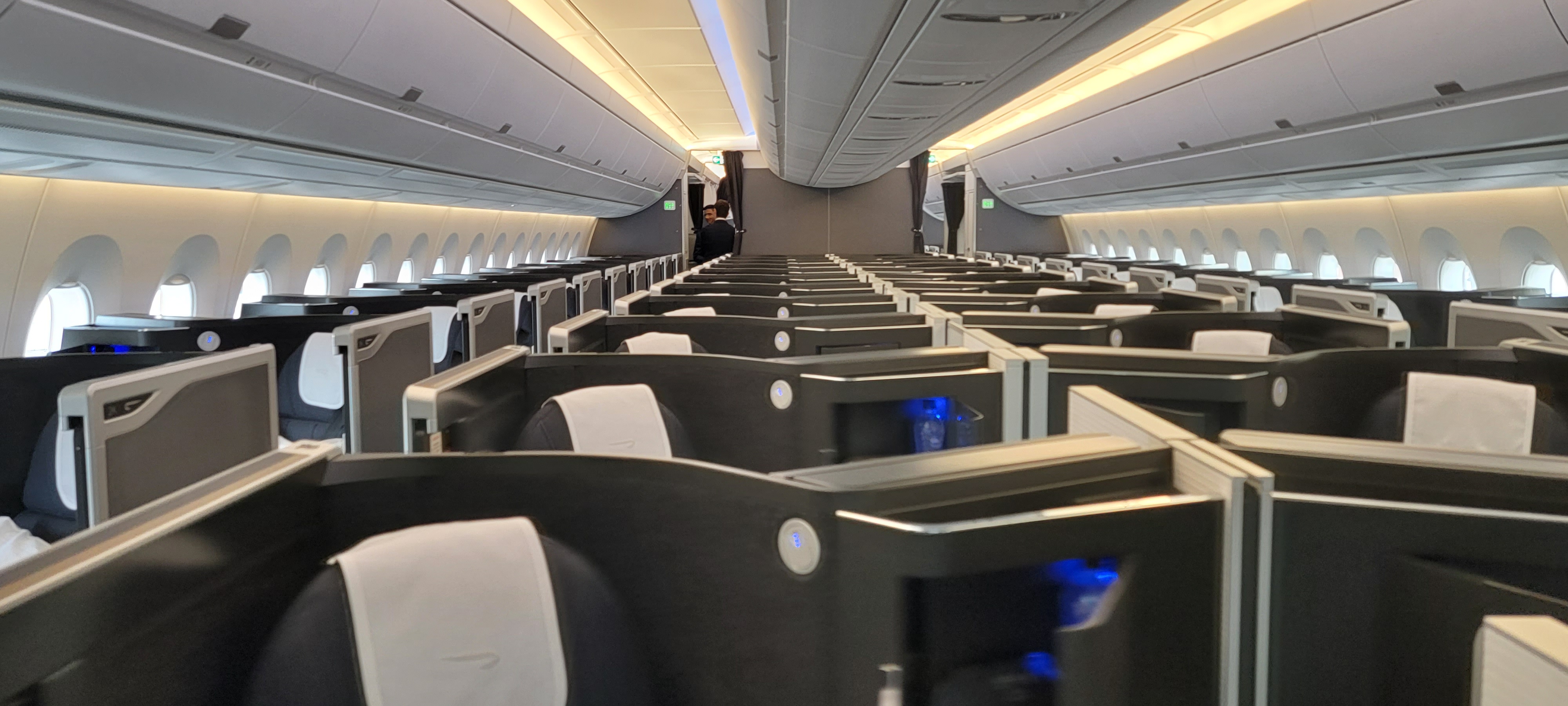
- For short haul, fly midday. You don’t want to disrupt their sleep patterns. You don’t want to have to wake them too early to go to the airport, or keep them up way too late traveling. Exhausted and overstimulated kids have meltdowns, and the best way to avoid it is to travel according to their schedule.
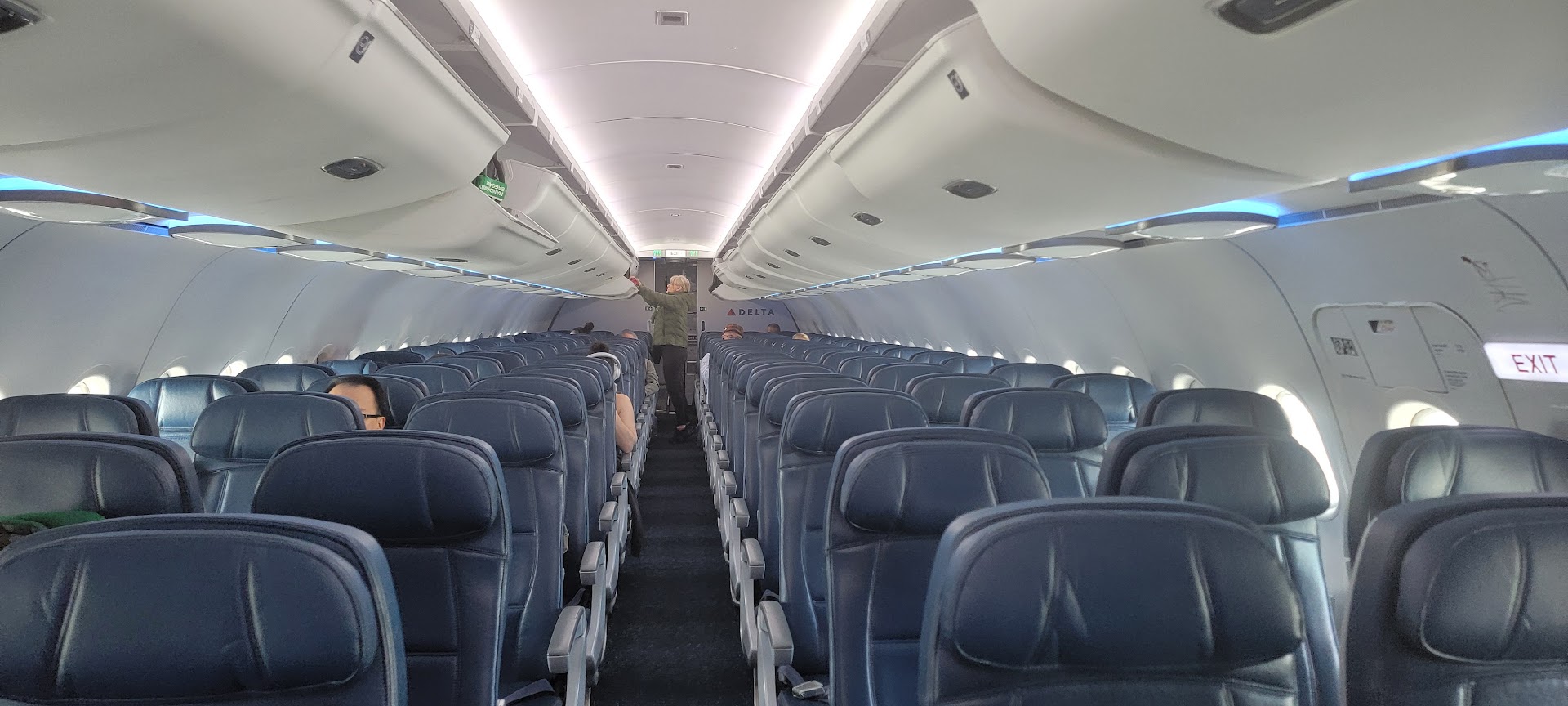
- Be prepared to overnight. Enroute to Bora Bora we spent the night in Los Angeles. Flying straight through from Austin to LA and on to French Polynesia just seemed risky with our then-one year old. We had a long layover before our Air Tahiti Nui flight home, so we got a room at the Intercontinental Papeete even just for a few hours of sleep. Breaking up long trips with several components and getting as much rest as possible helps a lot!

Ritz-Carlton Marina del Rey as an LAX airport hotelWhen she just turned three we even employed the overnighting strategy to and from Hawaii. And just getting a few hours’ rest was enough about nine months later to fly home San Francisco – Austin after getting off of a Sydney – San Francisco flight.
I booked a room at the Grand Hyatt SFO attached to the airport using points, and actually had two sets of flights home: a connecting segment that was included in our award from Australia at no extra cost, and an award the next day on another airline. That way I could see how the trip was working out and make the call once we’d landed in San Francisco. Once we taxied out on the same-day connecting flight, I cancelled that next-day award for a free miles redeposit. We took a nap for a few hours, and were in great shape to fly on.
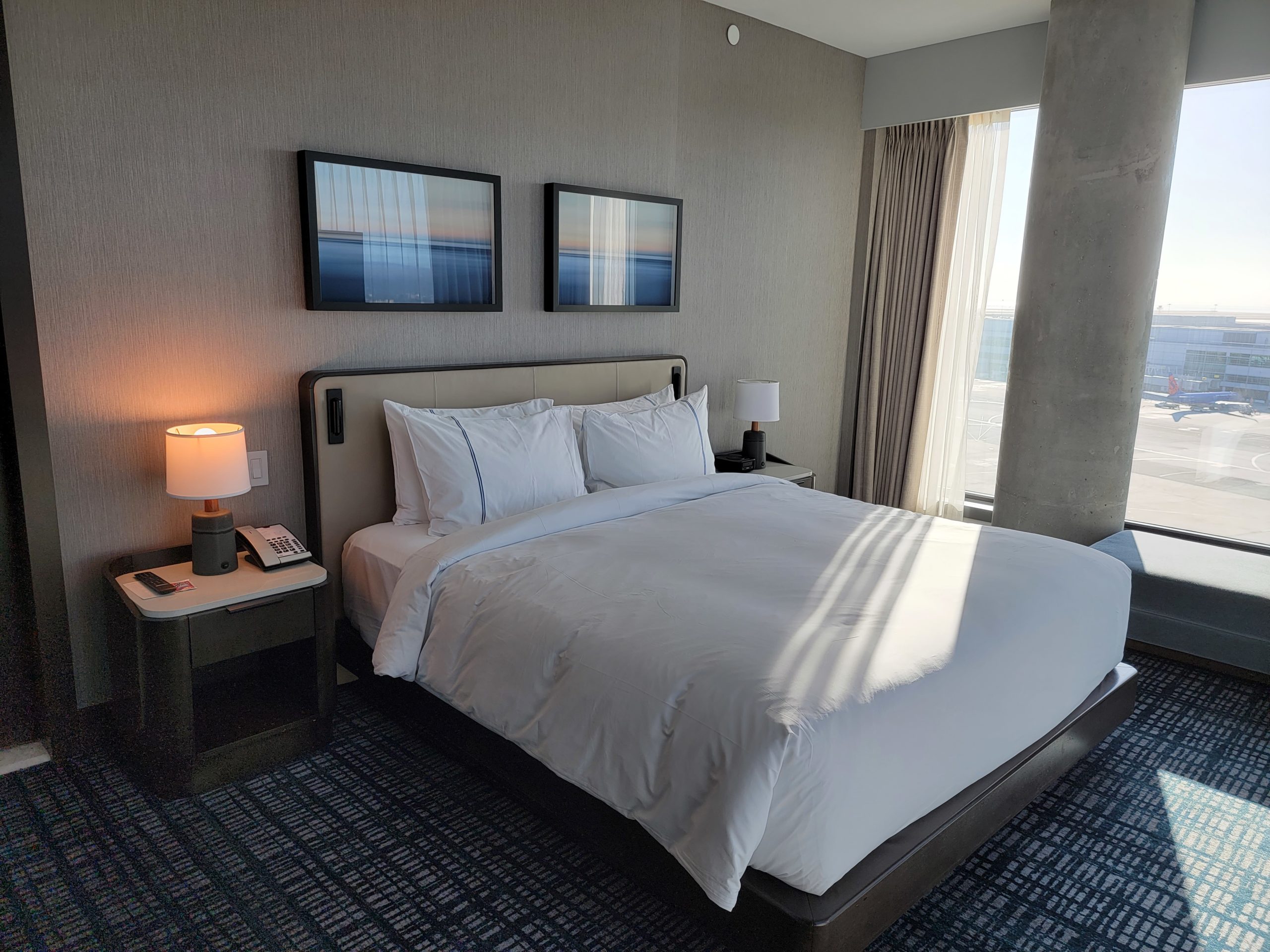
Grand Hyatt SFO - Keep to your normal bedtime routine. Something that’s worked really well for my daughter is to stick to her usual routine so that she expects to and is ready to go to sleep on an overnight flight. That means brushing teeth and changing into pajamas in the lavatory, and then I read her three books and tell her two stories. By the time that’s done she knows and accepts it’s time for bed even though we’re on a plane.
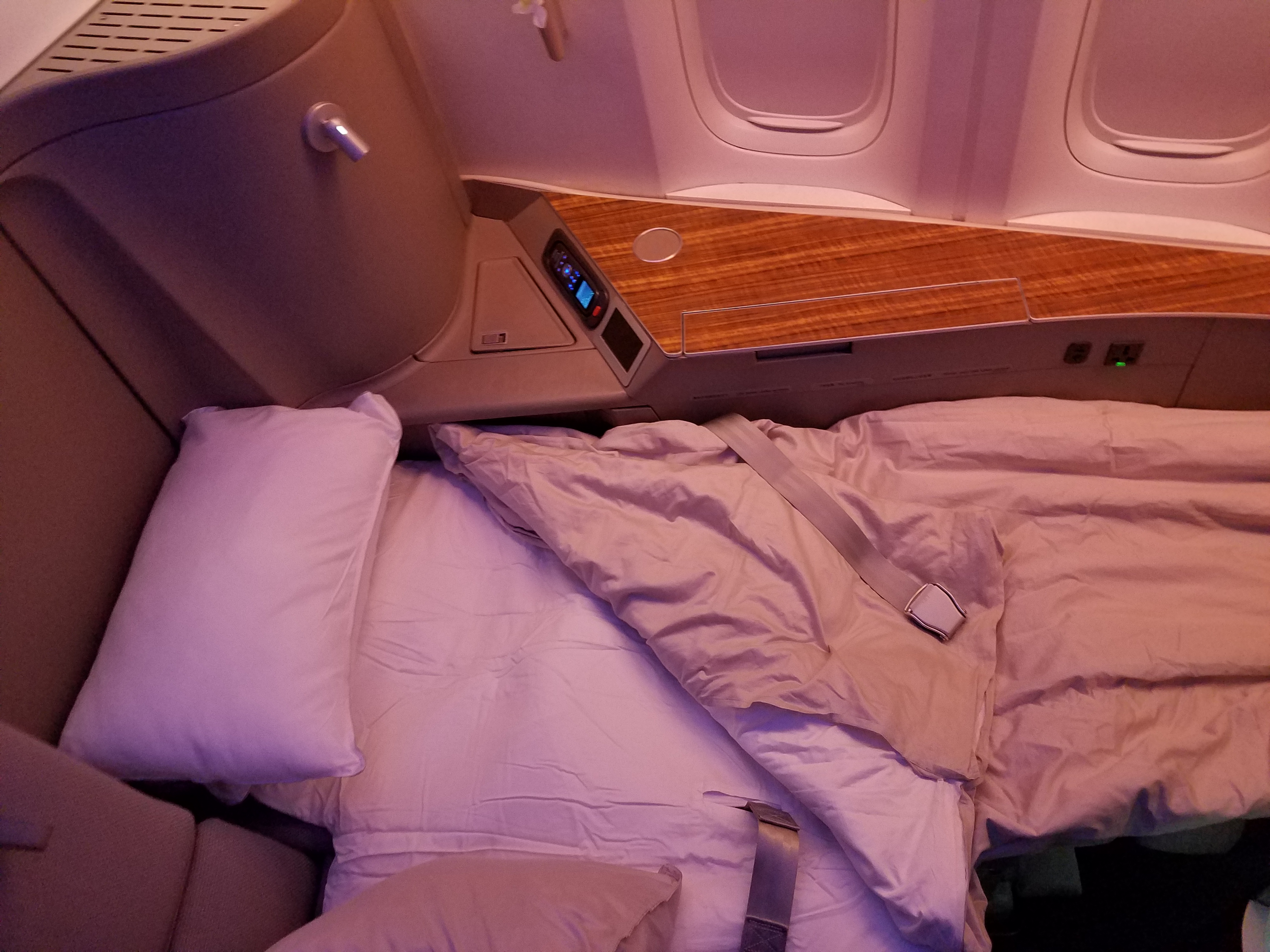
- Unlimited tablet time is ok on flights. A lot of parents want no electronics whatsoever. I think that, with guidance about what they’re watching and playing, tablet time can develop useful skills and that the key is moderation and balance. On planes, balance goes out the window but that also makes the trip exciting. It’s a clear space in which the normal rules don’t apply, in a way that’s easy to understand and doesn’t bleed over into expectations of similar tablet use at other times.
This way they can entertain themselves, and you can get a bit of a break from entertaining them on the long haul flight. It keeps them engaged, avoids their becoming too squirmy, and benefits the rest of the passengers in the cabin, too.
Seat back entertainment screens can also work, but I prefer to have a plethora of preloaded age-appropriate content.
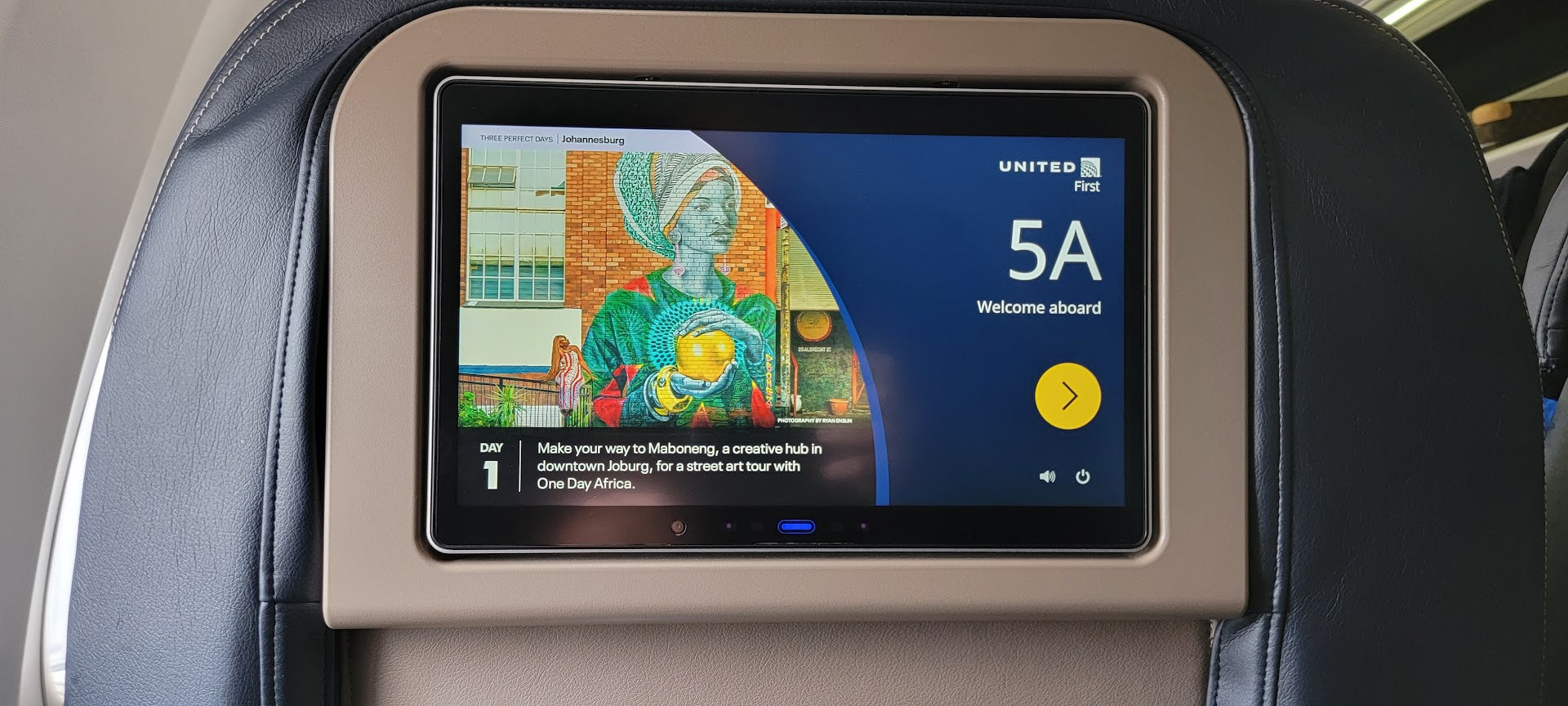
- When a child cries, it’s usually for a reason. Know what they’re telling you, and game out in advance how you might respond. I think that most passengers understand if it happens, and as long as you’re ready to respond you’ll get plenty of grace.
I’ve also seen parents tune out and give up, and that’s when tensions ratchet – because they’re visibly not parenting. Other passengers bear the brunt and then they’re full of scorn. Just prepare, and you’ll have a much wider birth for things to go a little bit of plan.
With the right preparation, you’ll be able to travel the world – to show things to your kids, to connect with family, to experience things as a family – and even getting there can be a positive part of the trip. Once you’ve done it a few times, kids get to know the drill. It becomes familiar and routine, and far easier. They know security and won’t worry about giving up their stuffed animal (they’ll get it right back), they know the airport, and they’re excited to head down the jetbridge and into a seat for the next many hours.
Of course, with miles and points making the world smaller and premium cabins accessible, you’ll want to give them some balance too. Maybe a few Southwest flights thrown in! More than once my daughter, when she was three, asked a flight attendant in the galley on boarding whether the Boeing 737 had beds? I quickly learned this was something to discuss in advance. But the more you talk through and they know what to expect, the easier it is too.


Good post, Gary. I would add that as a passenger without kids, I try to keep the mindset that we’re all in this together, we were all children at one point in our lives, and that most of the time when a kid is having a meltdown there is nothing the parents can do about it. The person suffering the worst in the whole ordeal is the kid, and a little compassion and empathy goes a long way.
Well yes you use common courtesy to other passengers by planning ahead. But today most parents just assume their child’s meltdown isn’t their problem, it’s your problem. I heard that loud and clear on OMTA from people that think the world revolves around them and their children.
That wasn’t that way when I grew up. Parents understood whether it was a church or an airplane others shouldn’t be disturbed by their children.
We also didn’t get to fly when young. It was rare. I heard infants should not be exposed to pressurization due to inner ear damage. Most begin to cry during descent.
Thank you, Summer Hull.
@LAX Tom
While I agree with your altruistic comments, the literal ‘fist fighting over masks’ on flights during the pandemic proved to me that some among us do not believe that we are ‘all in this together.’ It’s their ‘freedom’ and ‘preference’ over your family and everyone else. Children, the disabled, and even dogs are easy targets for bullies. Sadly, I do not see greater ‘compassion’ on the horizon in the US or abroad. We need to be prepared to defend the vulnerable, especially while traveling.
Headphones for all your kids devices please! (Adults too but some people seem to think “low volume” repeated game console sounds are just A-OK with everyone around them.
Congratulations on your second child. I don’t recall reading about him before. I still am adamant that babies and infants should never be in premium cabins for a variety of reasons but I’m pleased for your family addition nonetheless.
Personal experience – until kids are old enough to reasonably amuse themselves in transit (iPhone, iPod, tablet, computer, seatback video – or even a book), I brought along snacks and a change of clothes (mishaps occur) and made a special trip to the mall just before each trip to buy a new set of small noise-free toys that lacked parts of pieces to lose. The new toys were such novelty that they carried disproportionate play and fun value. Firt trip with my daughter was at 6 weeks and it went perfectly. We hit some turbulence – my wife white-knuckled it and my daughter giggled. Both have never changed.
Toddlers have a tendency to kick at the seat in front of them – I’ve been both the receiver and a parent trying to stop it. One solution that works if you are a family of 4 or more: arrange your seating so that you are sitting in consecutive rows, and put the kicker in the second row so that he is kicking a family member’s seat ahead of him. Not ideal for the family member being kicked, but much better than a stranger.
NEVER WALK THE ISLE with the child.. They will not be happy ever again in their seat.
What’s worse than parents who are oblivious to the disruptive behavior of their children? Parents who are aware but do nothing.
Recently, I was on a British Airways flight from LHR to PIT in business class, seated near two parents with their two small children. While I’m generally tolerant (I have several grandchildren), these kids were excessively noisy, especially the young girl, around 4 or 5 years old. I refrained from saying anything directly but did exchange a few disapproving glances. This prompted the mother to confront me, saying, “Kids exist in the real world, and you need to deal with it.” I simply responded, “Not in my world, they don’t,” and left it at that.
The trend of parents wanting to be their child’s friend rather than a parent is alarming. To mitigate such disturbances, airlines should consider implementing an age restriction of at least 18 for business and first class. While this might not eliminate every issue, it would certainly improve the experience for many passengers.